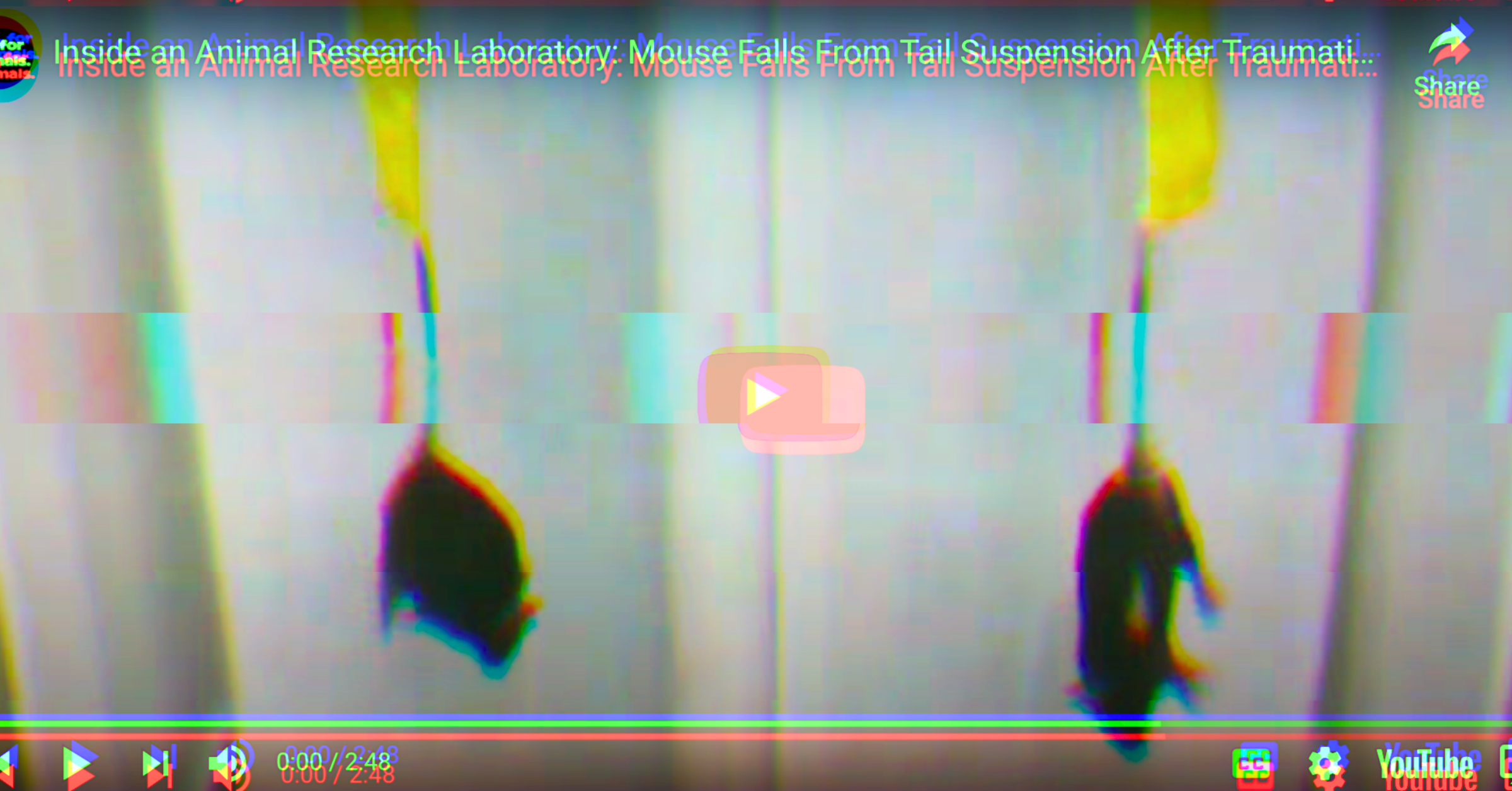
Animal Researchers Violently Abuse Animals, Warns YouTube
Earlier this year, Animal Partisan and Rise for Animals exposed heinous traumatic brain injury experiments being undertaken at Florida State University; and thanks to Animal Partisan’s diligence, we were able to include a video of these experiments — a video recorded and supplied by the university itself.
Yet, if you visit our blog today, you will notice that the embedded video is listed as “unavailable”:
YouTube has wrongly banned this animal research video, while rightly characterizing the animal researchers’ conduct as “[a]nimal abuse”.
YouTube did not specify the exact reason for its ban, pointing us to its “Community Guidelines”, generally, and its “Violent or Graphic Content” policy, specifically. Post review, we suppose that YouTube banned our video on the basis of the following incorrect and unfounded determinations:
- The experiment was “violent” and depicted “human[s] maliciously mistreat[ing]” animals and “caus[ing] them to experience distress outside of traditional or standard practices.”
- YouTube is correct that the video displays “the malicious infliction [by humans] of serious physical or psychological harm that causes an animal to suffer”, but it is patently incorrect that the depicted experiments fall “outside of traditional or standard practices.” Animal research is – fundamentally and irretrievably – premised on human “malice” (defined by Merriam-Webster as “having or showing a desire to cause harm to someone”); and, as our blog made clear, learned helplessness experiments – as well as innumerable other examples of human-induced distress and human-mediated animal abuse and torture – are “traditional” AND “standard practices” inside U.S. laboratories. (So “traditional” and “standard”, in fact, that they have continued for generations in the face of widespread criticism leveled by scientists themselves).
- Vivisection is not a “widely accepted practice[], like hunting, trapping, pest abatement, food preparation, medical treatment, or animal slaughter that shows harm to an animal or group of animals”.
- YouTube provides exceptions for videos depicting the intentionally-inflicted suffering (and killing) of sentient beings, unless – it appears – the suffering (and killing) occurs inside laboratories. This is indefensible, because animal research is a “widely accepted practice[]”, one broadly supported by approximately 50% of the U.S. public and facilitated by over $20,000,000,000 taxpayer dollars each and every year.
- The video was shared with the intent of “shock[ing] or disgust[ing] viewers”.
- YouTube is correct that animal experimentation videos often “shock” and “disgust viewers”, but it is incorrect that this was our purpose in publicizing it. Though we assert the right to share legally-obtained animal research footage no matter our intention, YouTube’s recognition of this right is not necessary to render its banning of the video unacceptable and hypocritical. Indeed, YouTube concedes that it “may allow content that includes violent or graphic content if the video has educational, documentary, scientific, or artistic context.” We fail to see how animal research footage recorded by animal researchers in the course of their “work” is neither “educational”, nor “documentary”, nor “scientific” – indeed, the footage checks all three of these boxes.
Perhaps most flippantly, YouTube banned the authenticated animal research video under the guise of “keep[ing] our community safe”.
Safe from what? From bearing witness to organizational practices? From learning what is done to animals in the name of human benefit? From seeing and understanding what the animal research industry tries so desperately to hide from us?
No matter the answer, it appears clear that YouTube is doing the bidding of the animal industrial complex, which continues to fight tooth and nail to keep us (the public) distanced from the profoundly damaging and ethically indefensible exploitation, torture, and death it reaps.
YouTube denied Rise for Animals’ appeal to its decision to ban the video footage supplied by Florida State University, gave us a “warning”, and required us to complete a content “training” to be able to upload videos in the future.

This “training” advised us that other videos subject to banning — just like our animal research video — include depictions of a human (a) gratuitously killing and abusing animals, such as a person “pouring salt on slugs” and “zoom[ing] in on the slugs as they die”; (b) “beating a stray dog”; and (c) “deliberately creat[ing] a frightening situation for an animal, such as a person “put[ting] on a scary mask and corner[ing] a cat to film the cat’s reaction”.
By doing this — by equating unjustifiable physical and psychological torment of animals with violence and animal abuse — YouTube drives home a most fundamental and important point: that animal researchers are violent animal abusers, even if legally-protected ones.
On this point, YouTube gets no objection from us.
But, we do object to YouTube’s decision to hide the truth about the actions of animal researchers, and we need your help. Email FSU and ask it to tell YouTube to allow the videos:
Share this post on Facebook or X (Twitter)